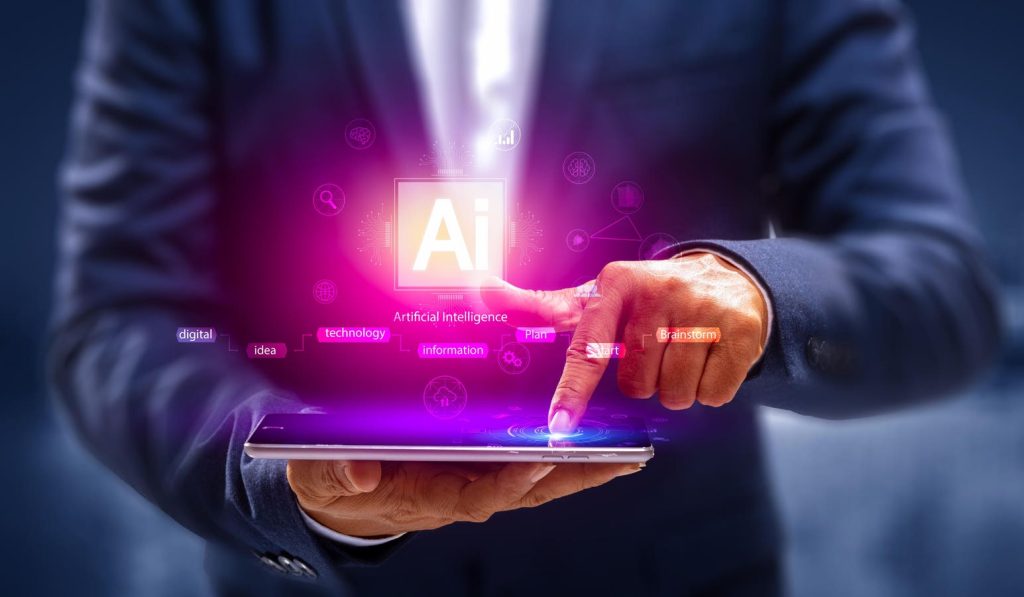Dave Levy oversees the Worldwide Public Sector business at Amazon Web Services (AWS).
Generative artificial intelligence has recently captured widespread attention, and for good reason. This emerging technology has the potential to transform customer experiences, create new applications never seen before, help people reach new levels of productivity and much more.
In fact, according to research from Goldman Sachs, generative AI “could drive a 7% (or almost $7 trillion) increase in global GDP and lift productivity growth by 1.5 percentage points over a 10-year period.”
Many applications and user experiences are poised to be reinvented by generative AI, and the public sector is no exception. Governments, education institutions, nonprofits and health systems must constantly adapt and innovate to meet the changing needs of their constituents, students, beneficiaries and patients. New, easy-to-use services are democratizing generative AI access by making it accessible to customers across industries.
As this rapidly evolving technology gains steam, how can public sector leaders ensure they’re using generative AI to its full potential? Below are four key areas where generative AI can make public sector organizations more efficient, responsive and effective in achieving their missions.
1. Empowering Decision-Makers With Better Data
Large language and foundation models can process and analyze vast amounts of data, oftentimes much faster and more efficiently than a human could. This capability can help public sector organizations gain valuable insights and make more informed decisions.
For example, government agencies could use generative AI to help summarize large amounts of information from disparate sources—such as public health data and economic indicators—to identify patterns, trends and correlations. This kind of analysis provides government officials with a comprehensive view of a particular topic, which in turn allows them to be more proactive in carrying out activities.
Additionally, public sector organizations often face the challenge of allocating limited resources effectively. Generative AI can assist in optimizing resource allocation by analyzing historical data, demand patterns and other relevant factors.
This capability can be particularly valuable in sectors such as transportation, where the technology can be used to predict traffic congestion, optimize public transit routes and reduce carbon emissions. Generative AI can also aid in planning and forecasting infrastructure development, ensuring that resources are utilized optimally.
2. Accelerated Scientific Discovery
Generative AI is likely to change how researchers work by helping them find information faster and freeing them up to pursue new experimental designs. It can provide highly complex levels of analysis that would traditionally take researchers days, months or even years.
Generative AI can also act as an idea generator, surfacing overlooked connections that will help researchers consider more alternatives. In the medical field, this could ultimately support faster drug discovery, more accurate disease detection and efficient treatment.
One example of this technology in practice is at the Allen Institute (a customer of AWS), which is using AI to build the first-ever map of the human brain, providing insight into brain disease and why conditions like Alzheimer’s and Parkinson’s occur. The Allen Institute plans to leverage generative AI to help researchers simulate brain processes and speed up discoveries.
3. Personalized, Convenient Services
In today’s digital world, citizens expect the same world-class technology experience from the government that they expect when they log onto Netflix or shop online. Generative AI can help meet these expectations by tailoring services to individual citizens’ needs across a breadth of platforms.
For example, chatbots powered by generative AI can handle routine citizen inquiries. This reduces the burden on employees so they can focus on more complex tasks while also improving responsiveness and the overall customer service experience.
AI-powered virtual assistants can provide personalized help, answer frequently asked questions and guide people through various processes, such as submitting an application for Medicaid, renewing a driver’s license, obtaining a building permit and more.
Additionally, in education, generative AI can suggest personalized learning paths for students, enhancing the educational experience and learning outcomes. For example, an educator could use generative AI to help analyze student writing and responses and then use that analysis to provide tailored feedback and suggest materials that align with an individual student’s specific learning needs.
4. Improved Productivity
Accenture predicts that language-based AI will support or augment up to 40% of all working hours in the near future.
Generative AI can be applied to repetitive tasks so humans can focus on higher-level mission priorities. For example, a government agency could help its employees find efficiencies by using technology to augment workflows like document processing or case management. In the long run, generative AI can result in considerable cost savings by supplementing some processes and lowering reliance on manual labor.
In healthcare, one of the most common pain points for clinicians is compiling clinical documentation after every patient-clinician discussion. It is a complex, multistep process that takes time away from seeing patients.
AWS customer 3M Health Information Systems (HIS) is working to alleviate this challenge by using generative AI to advance its ambient clinical documentation and virtual assistant solutions. These solutions can help clinicians create accurate and complete clinical notes in the electronic health record. 3M HIS aims to transform the patient-physician interaction, with a primary emphasis on enhancing the patient’s experience and alleviating the administrative workload for physicians.
While still in the early days, I believe that generative AI has the potential to greatly impact how public sector organizations operate, how they implement and manage programs and services and how they interact with and serve citizens and end users.
As generative AI continues to advance, it’s crucial for the public sector to foster the safe, responsible and effective deployment of AI by establishing and implementing the necessary safeguards to protect citizens. When used responsibly, this technology can revolutionize the way public sector organizations deliver on their missions, helping them make data-driven decisions faster, streamline processes and enhance the experiences of those they serve.
Forbes Technology Council is an invitation-only community for world-class CIOs, CTOs and technology executives. Do I qualify?
Read the full article here










